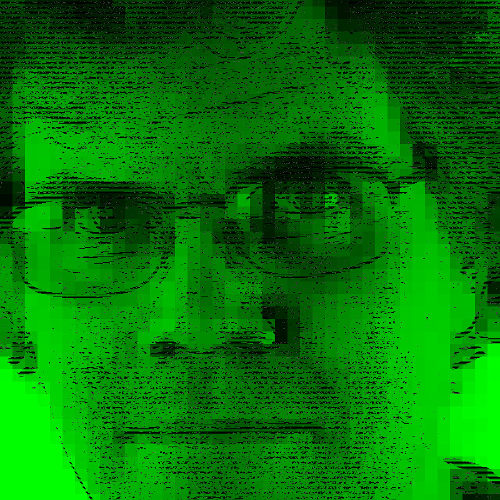We ride along with an LA police helicopter patrol. If someone's on the ground, perhaps fleeing a crime scene, and a helicopter starts following them, they probably won't have much luck hiding. The helicopter cops might not have much luck telling ground-based police where to find the flee-er, though. If this is happening in nice streets laid out in a grid, especially if institutions in the neighborhood have written their addresses on their roofs in big numbers, the helicopter folks can probably describe the location. In tangly streets, maybe not.
A few master burglars have written and spoken about how they move through urban space. Part of this is a matter of seeing things differently. Instead of looking at a building and saying "oh that balcony looks pleasant for standing on" or "what a pretty ornament", you should instead think "oh I can see how I could scale that building from the outside; and with my knowledge of fire codes, the fire escapes tell me where people and stairways are within." The book exhorts us readers to look at neighborhood buildings and think in terms of footholds and escaping observation. I looked around, but didn't really know enough to figure those out.
Criminals discovered the "Stop and Rob," Los Angeles banks so handy to highways that criminals could breeze in and make getaways. Skilled criminal construction workers or miners or someone tunneled into banks, making professional tunnels.
A criminal lived in a mall's "dead space" while planning crimes. He set up a hideaway under some stairs in an empty store. He used baby monitors from a nearby toy store to keep track of those who might find him.
So yeah, there are some interesting nuggets here.
There's also a lot of hand-wavy philosophizing about what it means that these folks use buildings in cities in unintended ways. And an aside about locksport which goes on too long. And an aside about the laws behind "burglary" that weren't what I wanted to read about either. So… a few good nuggets suspended in some yadda yadda and a couple of asides that should have been left out, but then the book probably would have been too short to be considered by paper-publishers. All in all, I call it a fun read if you let yourself skim when you think "I bet this is one of the parts to skim."
